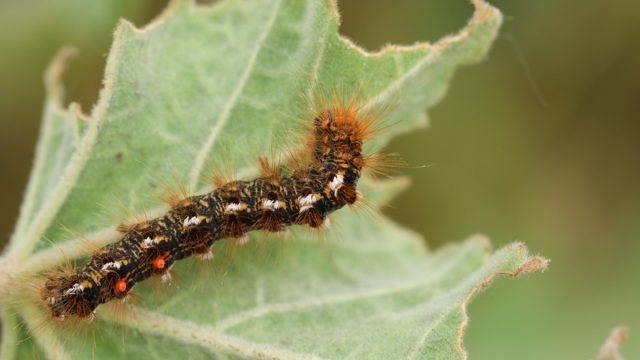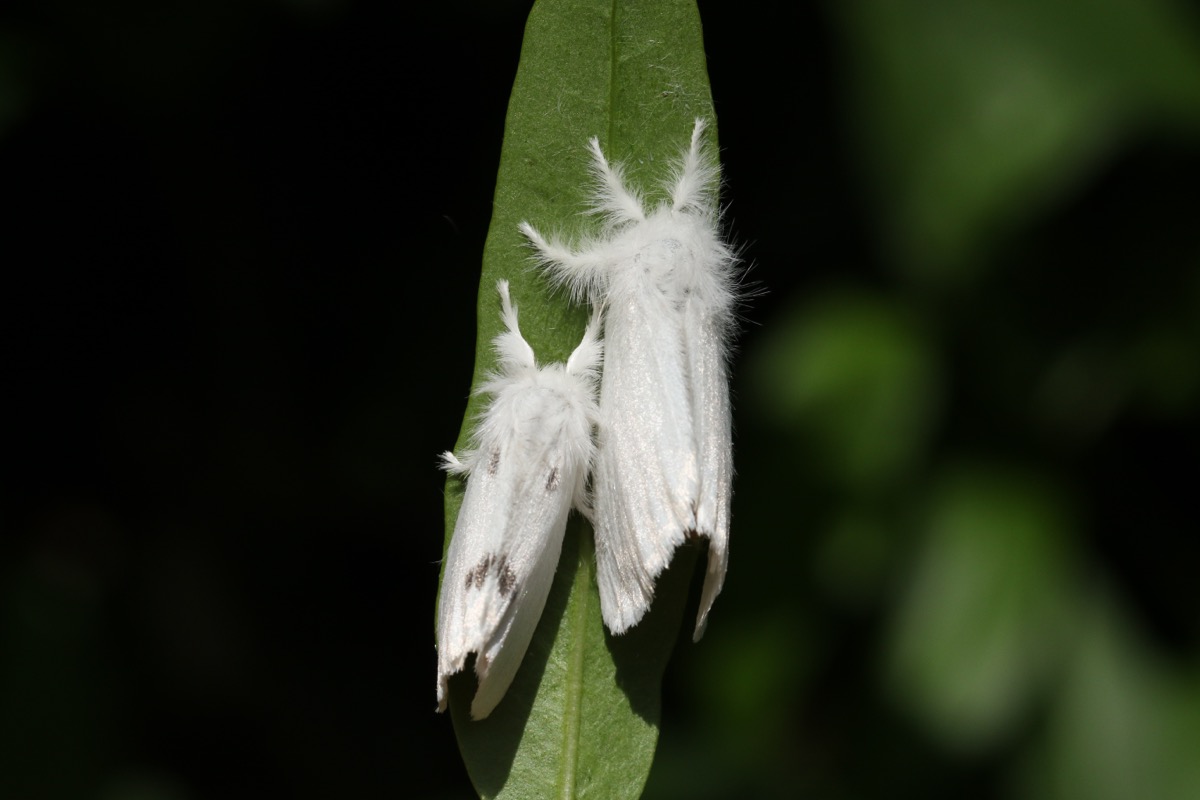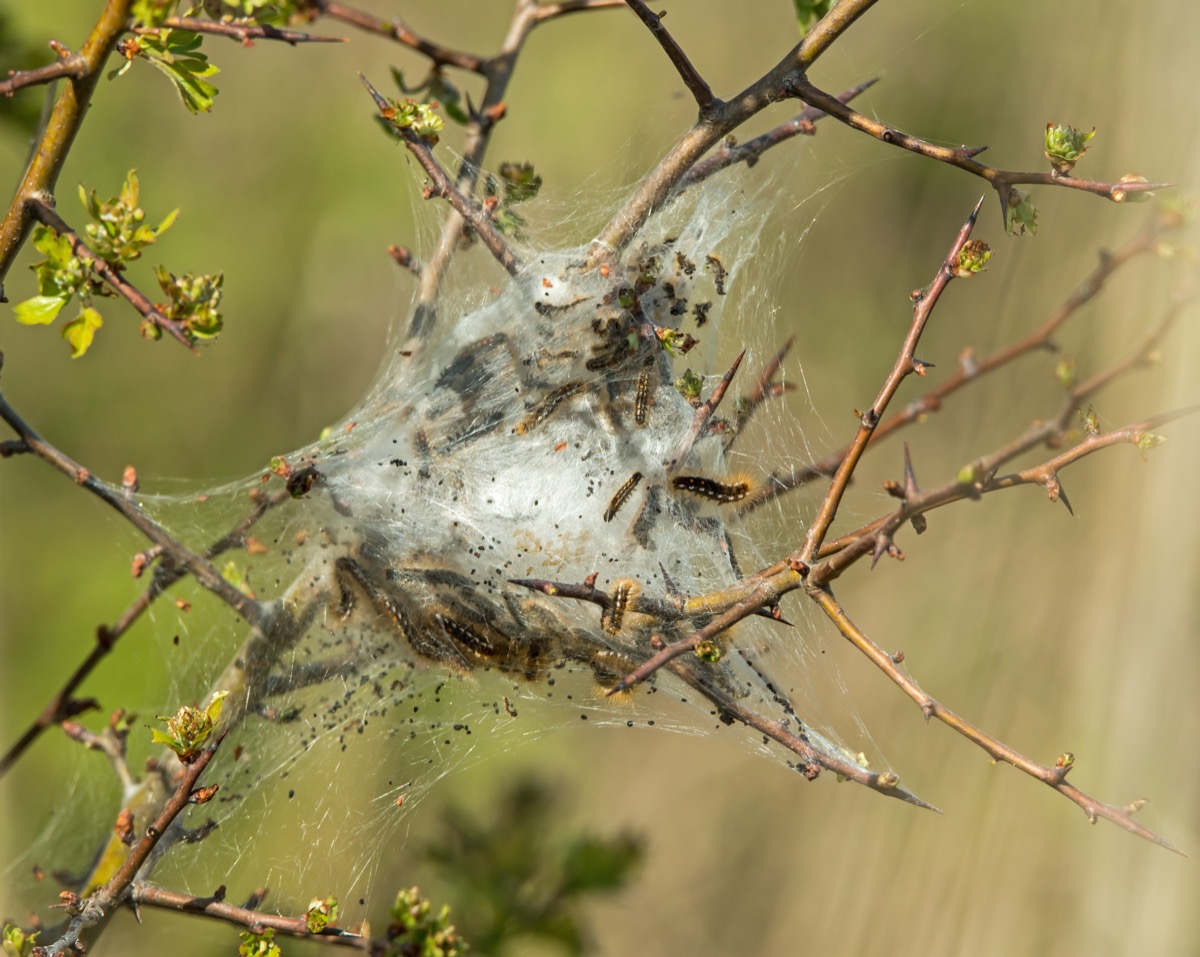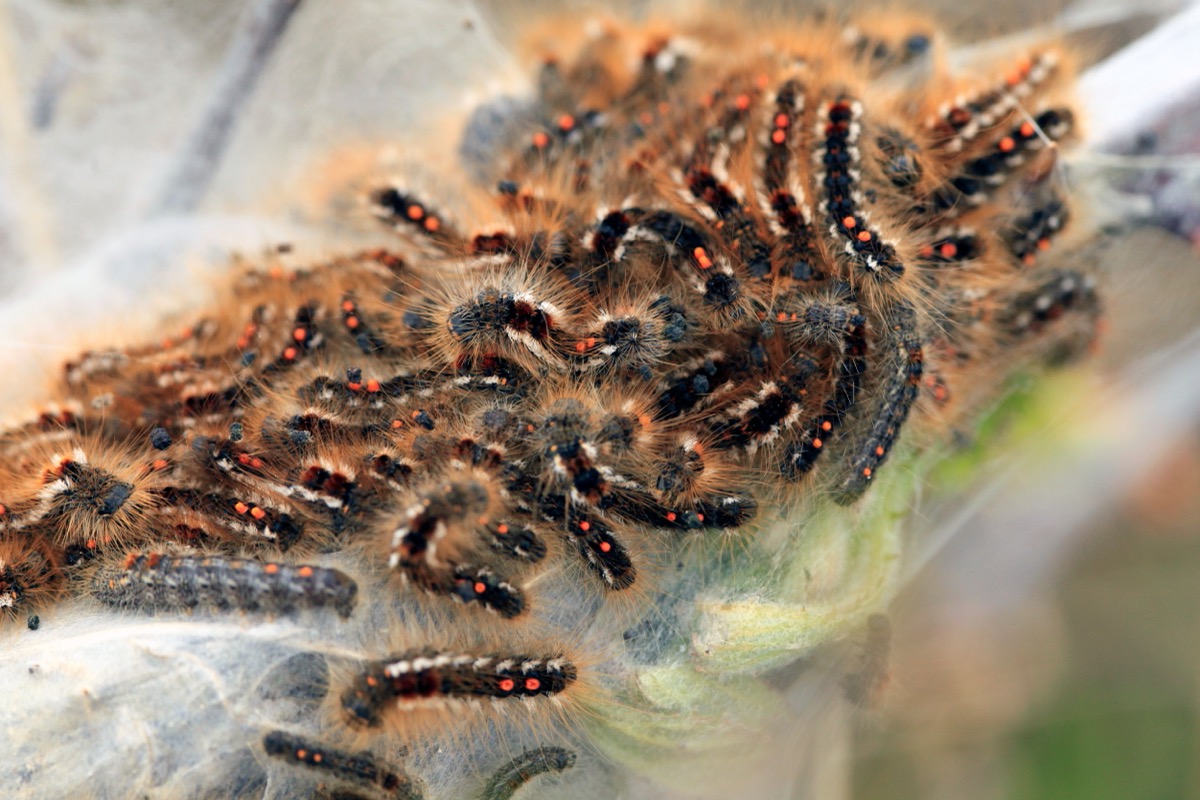If You See This Insect, Drown It, Experts Say

For many people, there’s a relatively standard protocol to adhere to when you spot an insect in your home: isolate it, scoop it up, and bring it back outside. And while the vast majority of pests you find in your home or garden are relatively benign, entomology experts say that one particular insect is not only a nuisance but may present a serious risk to humans and should be drowned to prevent them from spreading. Read on to discover which insect experts are recommending you kill on sight right now.
RELATED: If You See This Spider in Your Home, Don’t Step on It, Experts Warn.
Browntail moths have been spotted in multiple states.

In 2021, parts of New England have become overrun with browntail moths, an invasive species that present risk to both plant life and humans.
The moths, sightings of which have been reported in the state of Maine and in Cape Cod, Massachusetts in recent months, have been declared a “public health nuisance” by multiple local government agencies within New England. According to The University of Maine, the moths, which are native to Europe, have spread rapidly throughout New England and parts of Canada over the past 150 years.
For the latest pest control news delivered straight to your inbox, sign up for our daily newsletter!
Browntail moths have affected hundreds of thousands of acres of plant life.

Browntail moths typically feed on a diet of shrubs and broadleaved trees, including apple, birch, cherry, crabapple, oak, and pear trees, according to the Maine Department of Agriculture, Conservation & Forestry.
However, it’s not just pockmarked leaves you have to worry about if these pests are in your area. In an interview with the Press Herald, Tom Schmeelk, an entomologist with the Maine Forest Service, revealed that browntail moths had compromised approximately 150,000 acres of trees in 2020 alone—more than six times the area affected by browntail moth surges in the early 2000s.
Browntail moths can cause serious health issues in humans.

Your plants aren’t the only potential victims of browntail moths and caterpillars, however—they can pose serious health risks to humans, too.
The Maine Center for Disease Control and Prevention (CDC) reports that contact with browntail moth caterpillars or their toxic airborne hairs can cause a rash on human skin, which in some cases can be painful and severe. In some instances, individuals can inhale the hairs of these caterpillars and experience respiratory distress. To limit your contact with browntail moths or caterpillars, the Maine Forest Service recommends immediately showering and changing your clothes upon returning inside, not leaving your clothes outside to dry, and wearing protective gear including long sleeved shirts, long pants, goggles, and a respirator if you’re doing yard work in an area that might be harboring these pests.
If you see a browntail moth caterpillar, drown or burn it.

Browntail moths have white wings and white abdomens with some brown down the center, have wingspans of approximately 1.5 inches, and fly at night. Their caterpillars are brownish black with long hair and white and orange spots.
If you happen to see a browntail moth or caterpillar, killing it is the best course of action, experts say. “I tell people to kill them any way they can,” James Dill, a pest management specialist with University of Maine Cooperative Extension, told Bangor Daily News in 2020.
Environmental management specialists at the Dorset Council in the U.K. specifically recommend drowning or burning them. If the outbreak in your area is severe, pest control or tree specialists may be better equipped to handle it.
RELATED: If You Live in These States, Watch Out for the World’s Largest Spider.